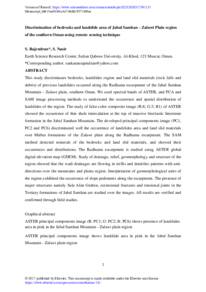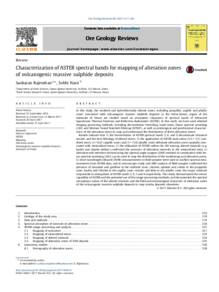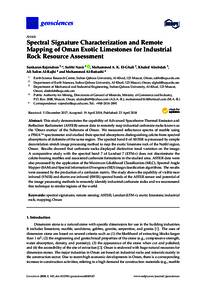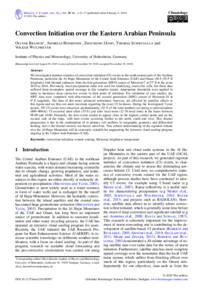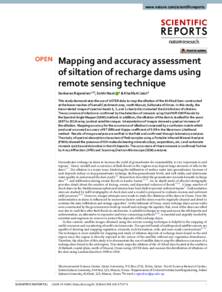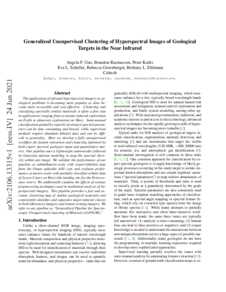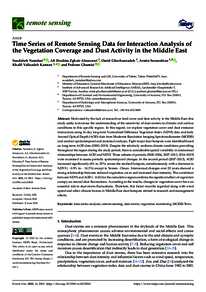Document
Discrimination of bedrocks and landslide area of Jabal Samhan–Zalawt plain region of the Southern Oman using remote sensing technique.
Identifier
DOI: 10.1016/j.rsase.2017.12.005
Source
Remote Sensing Applications: Society and Environment. v. 9, p. 69-81
Contributors
Nasir, S., Author
Country
Netherlands.
City
Amsterdam
Publisher
Elsevier B.V.
Gregorian
2018-01-01
Language
English
English abstract
This study discriminates bedrocks, landslides region and land slid materials (rock falls and debris) of previous landslides occurred along the Radhuma escarpment of the Jabal Samhan Mountain – Zalawt plain, southern Oman. We used spectral bands of ASTER, and PCA and SAM image processing methods to understand the occurrence and spatial distribution of landslides of the region. The study of false color composite image (R:8; G:3; B1) of ASTER showed the occurrence of thin shale intercalation at the top of massive bioclastic limestone formation in the Jabal Samhan Mountain. The developed principal components image (PC1, PC2 and PC6) discriminated well the occurrence of landslides area and land slid materials over Mirbat formations of the Zalawt plain along the Radhuma escarpment. The SAM method detected minerals of the bedrocks and land slid materials, and showed their occurrences and distributions. The Radhuma escarpment is studied using ASTER global digital elevation map (GDEM). Study of drainage, relief, geomorphology and structure of the region showed that the wadi drainages are flowing in trellis and dendritic patterns with anti-directions over the mountains and plains region. Interpretation of geomorphological units of the region exhibited the occurrence of slope pediments along the escarpment. The presence of major structures namely Sala Afan Graben, extensional fractures and tensional joints in the Tertiary formations of Jabal Samhan are studied over the images. All results are verified and confirmed through field studies.
ISSN
2352-9385
Category
Journal articles

